Everyone is talking about growth. One area that looks interesting is the world of TMT: technology, media and telecoms.
The world is changing. We have been building for banks and financial organisations and professional firms, but they are consolidating, while the TMT world is expanding at 7% a year.
Innovation in technology has had many conceptions. One of the most interesting periods was at MIT (Massachusetts Institute of Technology) in the Boston area, where Building 20 (below) was built in 1943 with a timber frame and shingle facade. Described as “a building with soul”, it was predominantly used for incubator units. The construction allowed the building to be adapted instantly with a saw and duct tape.
This was the building where radar was researched and where, over its lifetime of more than 50 years, nine Nobel laureates worked.
What people liked about the building was its flexibility and simplicity. It was hardly a piece of architecture as we know it. It was designed and built quickly. This flexibility is what the users wanted. There were no fancy finishes — air conditioning was minimal and, despite the ingenious technology, there were no false floors. It was simple and easy, and the building’s spirit fostered innovation.
The invention component encouraged students from far and wide, more recently China and India. They took their knowledge back to their home countries and often returned, with support from their families, to open new businesses. Or they expanded at home, and spread the message of innovation and friendship from their university.
Family tree
MIT was not the only model. In 1876, former California governor Leland Stanford purchased 650 acres of Rancho San Francisquito for a country home and began to develop his famous Palo Alto Stock Farm. He bought adjoining properties totalling more than 8,000 acres. The little town that was beginning to emerge near the land took the name Palo Alto (“tall tree”), after a giant California redwood on the bank of San Francisquito Creek. The tree is still there, and later became the university’s symbol and centrepiece of its official seal.

When Mr Stanford set up Stanford University, he thought academia and commerce should go together.
On the campus, individual commercial companies appeared on their own plots with their own character. Palo Alto is now world renowned as a centre of innovation and technology, and home to companies that have changed the world and produced growth.
Other examples of technology use were buildings in New York and San Francisco, built in the 1920s as vast warehouses in art deco style with real character. Tenants are now attracted by their large floors and simple style. Of course, there was nothing high spec about these buildings.
What they are is full of character. Nearby are the creative industries with music, arts and restaurants to back up the long hours of the occupants, who could work from 8 am to midnight.
The firms in these buildings want flexibility, not only of space, but of occupation. Mr Packard of Hewlett Packard started his business life in
a garage. Mark Zuckerberg started Facebook in a university dorm. Companies can grow from three people to 30 in six months, and to 300 in two years. They don’t want to wait for planning approvals. Nor do they want incessant bureaucracy that imposes every detail on them. They don’t want compliant light fittings or compliant anything.
They want their own character.
Some have garden huts on the office floor, some have tents, some telephone boxes. Most have good catering facilities, often designed
so that a move from the desk encourages interaction as people pass each other. It’s not the conventional office plan that we know, where toilets and cores sit adjacent to users but a plan with large areas of open space with a small atrium here or there. It’s easy and it’s slightly rough.
People in these American buildings are known as the digerati. The men tend to wear black polo neck sweaters with jeans and sport cropped hair.
Many of the women have tattoos.
Silicon rally
The world of TMT is becoming more evident in London. David Cameron spotted this growth opportunity and has promoted Tech City in Old Street with a government-sponsored office run by Eric van der Kleij. People at Number 10 understand this new world and are actively promoting it.
Derwent London brilliantly used talented architects to create lively, interesting buildings that express the activity and emotion of their occupiers, rather than the compliance of the property world. Workspace has an equally clever model, that gives incubator and other tenants an easy start in life, and provides them with real service.
But our property world appears to be often out of touch with consumers. We take a classic office building as something cast in stone in its broad architectural appeal.
Growth is appearing in the east of London, whereas the “golden triangle” had its day in the 1980s and 1990s. East London, with its new transport systems and links to Europe through the Eurostar, and Crossrail coming, has the potential for huge new clusters. It is the new growth area.
Tech City has all the atmosphere spawned from New York but, at just more than 200,000 sq ft — as estimated by Jones Lang LaSalle — it is small. TMT already occupies millions of square feet elsewhere, but we don’t have the attractive buildings of the Americas. We didn’t build deco warehouses, nor do we have garages in landscaped east London.
There is an opportunity for growth. In the 1980s the City of London wanted to be the world’s financial centre, and it succeeded with the big bang in 1987.
The London Borough of Newham had a similar opportunity to drive growth. At Stanhope in 1998 we partnered Nigel Hugill, then at Chelsfield and took Stratford City as potentially a large shopping centre and other uses of 2m sq ft, and grew it to a consent of 14m sq ft of mixed use. There was an assumption from the property world that Stratford was a no-go area, yet Westfield has made it a success, after buying Stanhope and other shareholders’ interests.
With the Stratford City consent in the bag, Sir Robin Wales of Newham pushed for more growth, so Stratford became the Olympic site. What made the City and Newham succeed was a strong vision.
Tech vision
Today the Greater London Authority (GLA) has a vision for the growth of east London. But central government controls the councils and the GLA,
and it has a disposition against London.
The vision needs clear goals and understanding of how tenants can be encouraged to grow. There must be a commitment to grant TMT companies planning consent within a very short period — as Siemens experienced in the Royal Docks, where it won consent for its innovation building in eight weeks.
And there need to be reductions in specifications and compliance. No one in the innovation world wants to be told what lighting levels or other technical specifications to use.
The vision also needs to give tenants instantly available space. If Moore’s law applies to the tech companies, they will double every two years. Tenants won’t wait. Sites must be ready.
The flexibility the US companies enjoy needs to be joined by clarity from government. Fledgling TMT companies want low rents, as they are usually very experimental. Why not give them rate-free premises and capital allowances? East London could be an enterprise zone.
To attract the talent these companies need universities who require the brain power of foreign students. East London is attractive because house prices are low and there are vast numbers of units.
But TMTs want creative industries and the arts around them. Not a single new civic building, other than the Olympics, has been built in east London.
Government could help by building the new Lloyds coffee house equivalent of today. It could provide culture, support more fun, and encourage stuff to happen nearby. This is not the job of the private sector but a chance for government to invest in the infrastructure required by new industries.
The people in the TMT business have a huge range of potential skills. A games designer today, with his or her knowledge of rendering and design, could work on an aircraft concept of tomorrow.
The planners of Newham accept the technology of tomorrow in different architectural environments but will other boroughs follow? Who will build the first Chinese school to encourage parents to feel their children will be looked after? The American school and Lycée Francais have made foreigners comfortable. Why not replicate that?
TMT is a new alternative. The GLA is supporting it actively. London & Partners, the official promotional organisation for London, is an effective, smart group that is looking to help growth.
We have educational excellence at university level that will foster innovation at UCL, Imperial, Oxford and Cambridge. Yet knowing that education is the driver, the property world has focused on immaculate buildings with high-quality architecture, rather than the very different needs of the technology companies.
We need to develop new clusters of technology businesses built to the needs of their occupants that will attract occupiers and growth for those who want all the benefits of the UK. The property world tends to shun new ideas where risk and innovation are involved, but profit and growth will only come by listening to the consumer.
This means a more flexible development approach, and lower construction costs achieved through innovation and reduced red tape. Planning uncertainty must be a matter of the past. East London could provide the new MIT.
But be brave, take risks and, government, don’t forget us.
Source
Sir Stuart Lipton is deputy chairman of Chelsfield Partners






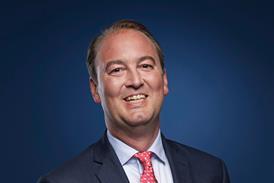
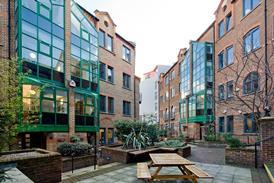
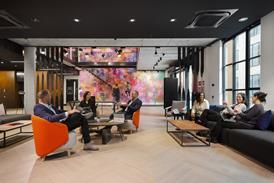















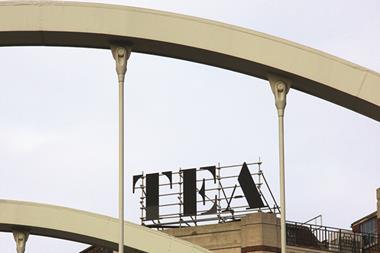

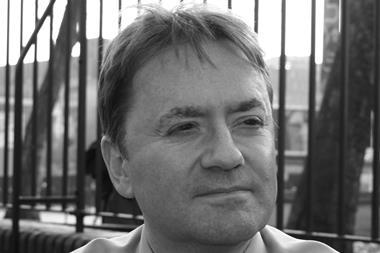

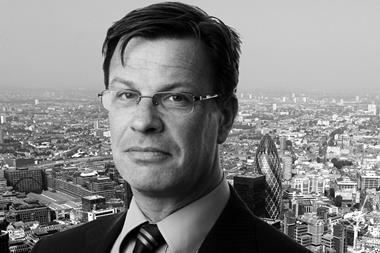

No comments yet